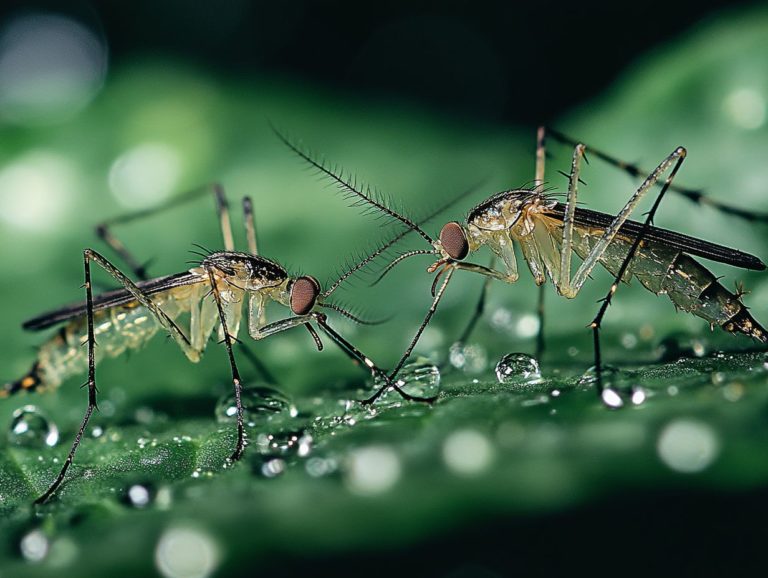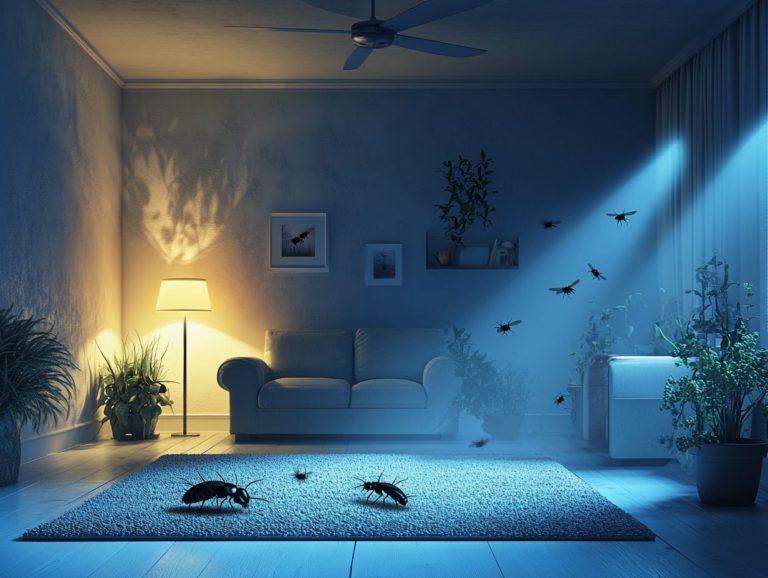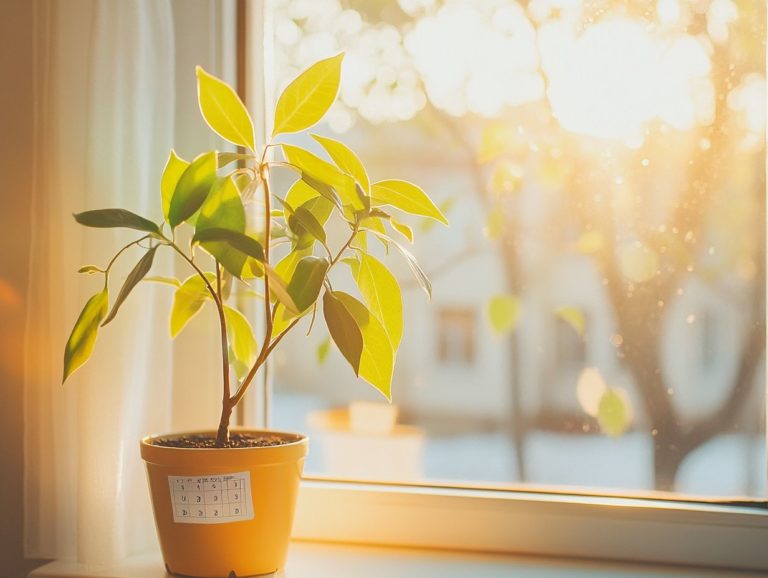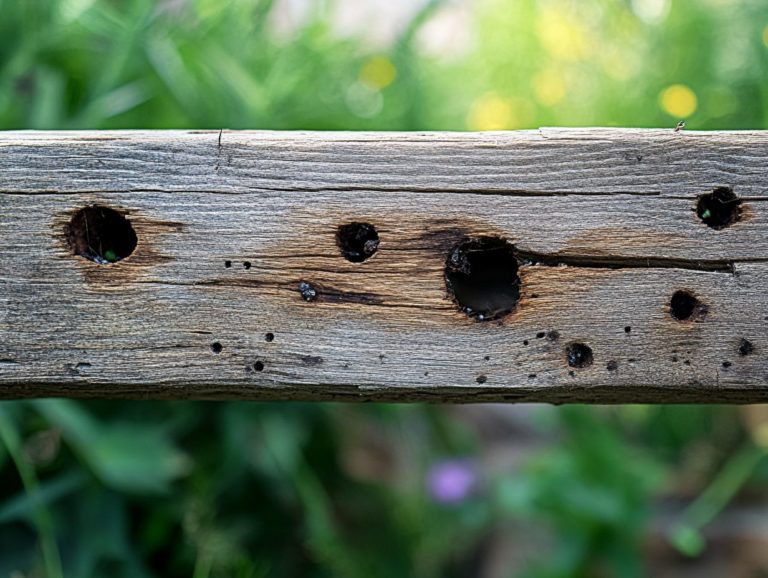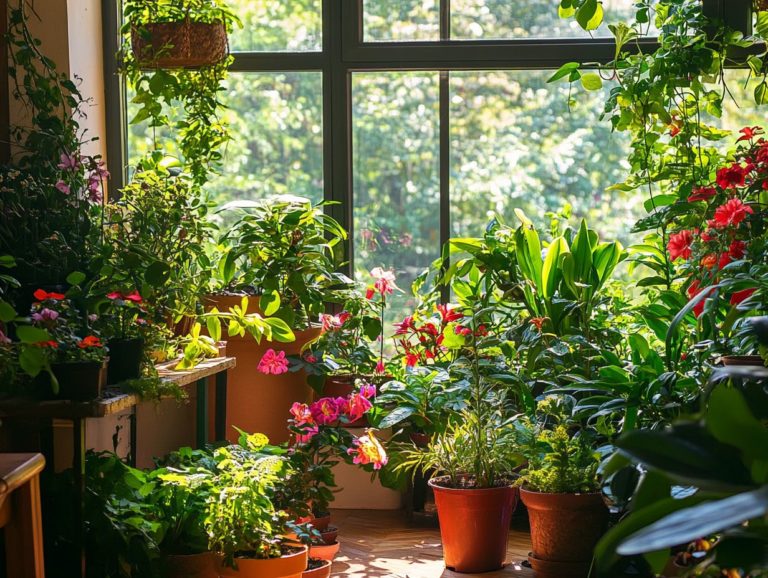How to Keep Your Indoor Plants Pest-Free
Indoor plants can transform your living space, infusing it with life and beauty. Yet, they also have a knack for attracting unwelcome pests. Understanding the common culprits and their effects is crucial for preserving the health and vibrancy of your greenery.
This guide will address effective strategies to prevent infestations. It will help you recognize early warning signs and introduce you to natural, non-toxic pest control methods.
You ll also find tips for regular care to ensure your indoor plants thrive and remain pest-free. Let’s dive in and create a thriving indoor paradise together!
Contents
Key Takeaways:
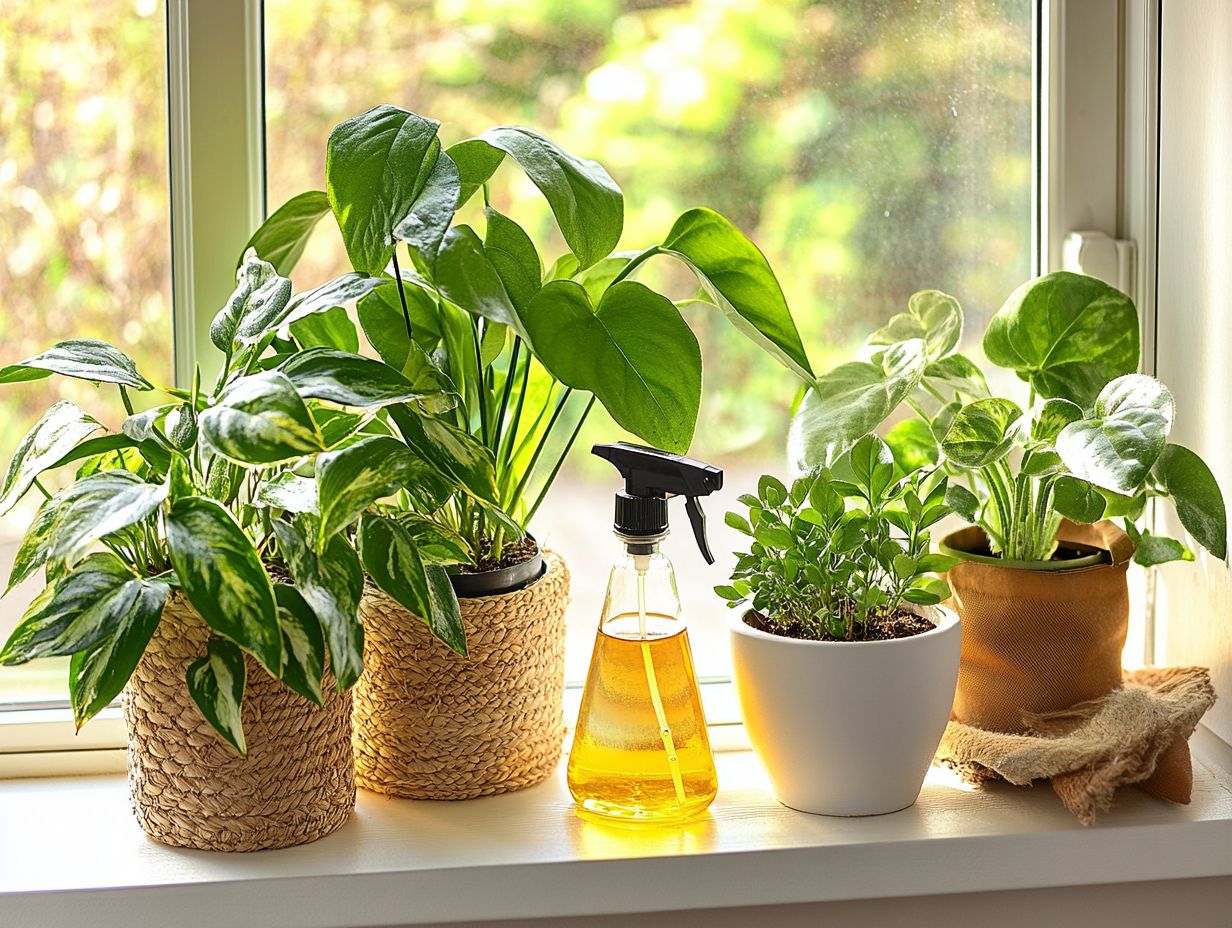
- Regularly inspect your plants for signs of infestation. Take immediate action to prevent pests from spreading.
- Create a healthy environment for your plants by providing proper lighting, ventilation, and watering. Healthy plants are less susceptible to pest infestations.
- Use natural and non-toxic pest control methods, such as neem oil and soapy water spray, to effectively eliminate pests without harming your plants or the environment.
Preventing Indoor Plant Pests
Preventing indoor plant pests is essential for preserving the vitality of your indoor garden. This ensures your plants flourish in their carefully curated environment.
Take action early by selecting pest-resistant houseplants, like the Aglaonema and Cast Iron plant. Complement this with effective pest control measures that prioritize organic solutions to enhance your indoor gardening experience.
Maintaining the right humidity helps your plants flourish. Regular maintenance is also important, as it allows you to identify and address potential pest issues before they escalate into serious damage.
This vigilance safeguards the health and beauty of your indoor oasis.
Common Pests and Their Impact
Understanding common houseplant pests is crucial for your success in indoor gardening. These nuisances can significantly affect both plant health and the quality of your indoor air.
Spider mites, aphids, and whiteflies are among the most prevalent culprits. They can wreak havoc on your beloved indoor plants.
Watch for signs of infestation don’t let pests take over! Many indoor gardeners like you turn to DIY bug sprays and yellow sticky traps, which are effective tools for monitoring and managing infestations.
You might notice spider mites by the tiny webbing they leave on leaves. Aphids can cause new growth to curl or distort.
Whiteflies, in contrast, can lead to unsightly sooty mold that detracts from your plants’ beauty. Recognizing these symptoms early on is essential, as severe infestations can sap your plants’ vigor and vitality.
Using solutions like homemade insecticidal soap, crafted from natural ingredients, allows you to treat issues without resorting to harsh chemicals found in many commercial products. Meanwhile, yellow sticky traps act as a proactive defense, luring these pesky insects and preventing their spread throughout your indoor oasis.
Together, these methods create a comprehensive strategy for maintaining a vibrant and healthy indoor environment.
Identifying and Addressing Pest Infestations
Identifying and addressing pest infestations in your indoor plants is essential for maintaining their health. This ensures your indoor garden thrives.
Watch for signs of infestation, such as yellowing leaves, sticky residue, or visible pests. These signals indicate an urgent need for treatment.
Utilizing natural insecticides like neem oil and essential oils can effectively combat these issues. Additionally, diatomaceous earth, a natural powder made from tiny fossilized aquatic organisms, acts as a formidable barrier against harmful pests.
By taking these proactive steps, you can cultivate a flourishing indoor garden that thrives in the comfort of your home.
Signs of Infestation and Treatment Options
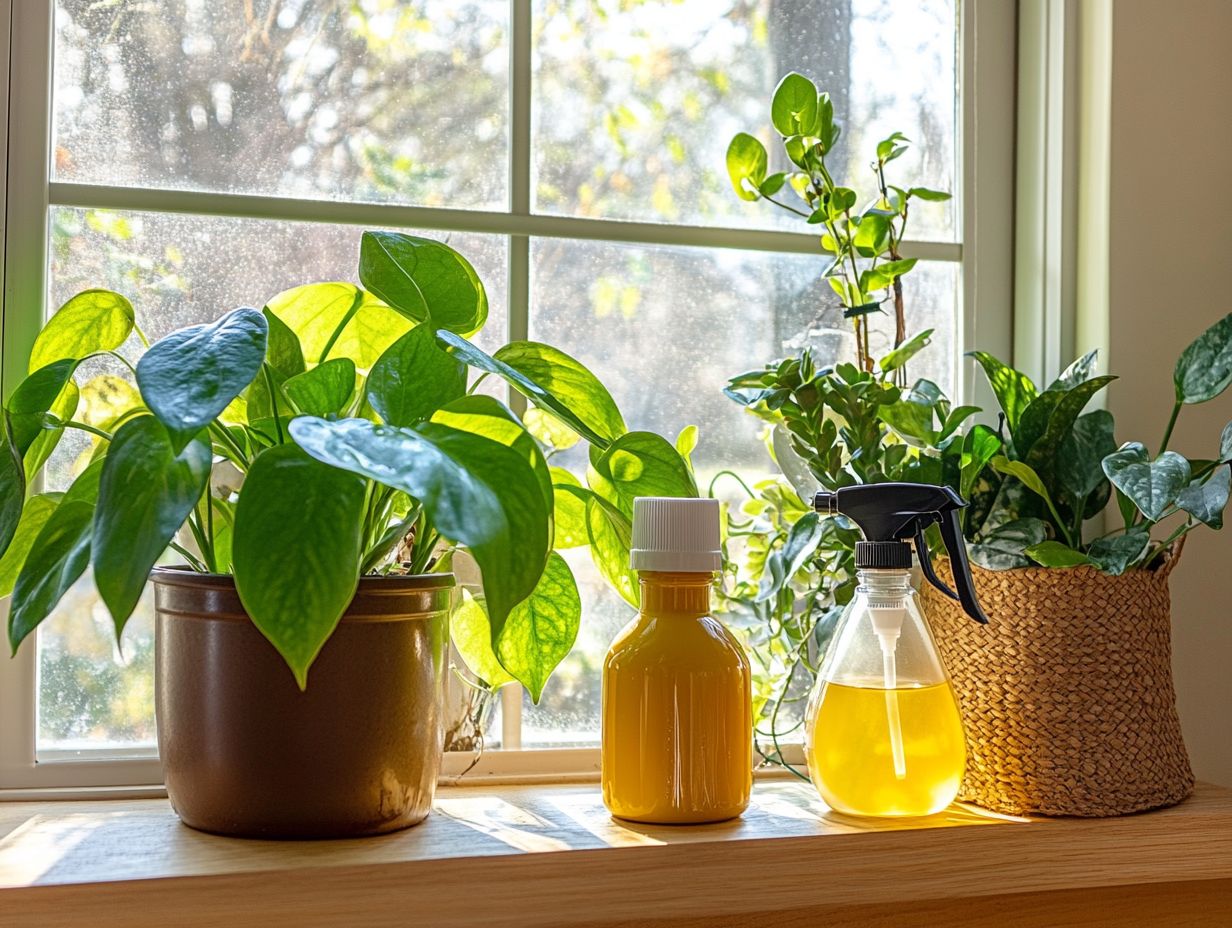
Signs of infestation can show up in various ways. It s essential to stay vigilant while monitoring your plants. Look out for wilting, discoloration, or visible pests. Each signals that you need to act quickly!
By opting for organic pest solutions that align with effective pest control methods, you can tackle the infestation without jeopardizing your indoor plants’ health.
Paying attention to these symptoms can reveal underlying problems, such as tiny webs or sticky residues left behind by insects like spider mites and aphids. These pests not only drain your plants’ vitality; they can also introduce diseases if left unchecked.
For treating infestations, consider options like neem oil, insecticidal soap, or diatomaceous earth. Diatomaceous earth is a natural powder made from tiny fossilized organisms that can help control pests. These remedies are effective while keeping harmful chemicals at bay.
Regularly inspecting your plants, maintaining optimal humidity, and keeping your growing area clean can help deter pests naturally. This ensures your indoor garden thrives.
Natural and Non-Toxic Pest Control Methods
Natural and non-toxic pest control methods are increasingly popular among indoor gardening enthusiasts. These methods help you grow healthy plants without using harmful chemicals. Consider options like neem oil and essential oils, which act as effective natural insecticides, providing a safe alternative for managing common houseplant pests.
This approach not only safeguards your indoor plants but also improves indoor air quality. It creates a healthier environment for your home!
Safe and Effective Solutions
Finding safe and effective pest control solutions for your indoor garden is crucial for keeping your plants healthy while ensuring the well-being of your pets and family. DIY bug sprays crafted from household ingredients are a favorite among gardeners. They provide a straightforward way to create your own natural insecticides.
Yellow sticky traps offer a non-toxic way to monitor pest populations. They help your indoor plants thrive and maintain their vibrancy.
These pest control techniques reduce harmful chemicals in your home and empower you to take control of your gardening practices. For example, combining common ingredients like vinegar, water, and mild soap can yield a potent, eco-friendly bug spray that effectively targets pests like aphids and spider mites. Apply these sprays during early mornings or late afternoons to prevent leaf burn and maximize effectiveness!
Strategically placing yellow sticky traps among your plants can capture flying insects and help you monitor infestations. This proactive approach simplifies implementing further interventions when needed, ensuring your indoor garden remains a flourishing oasis.
Maintaining Healthy Indoor Plants
Maintaining healthy indoor plants requires a thorough grasp of houseplant care tips and a commitment to consistent maintenance practices. Essential factors include monitoring humidity levels, providing the right light, and ensuring proper watering. All play crucial roles in the vitality of your indoor plants.
By adopting effective strategies, you can create a flourishing indoor garden that nurtures your plants and elevates the quality of the air in your home!
Regular Care and Maintenance Tips
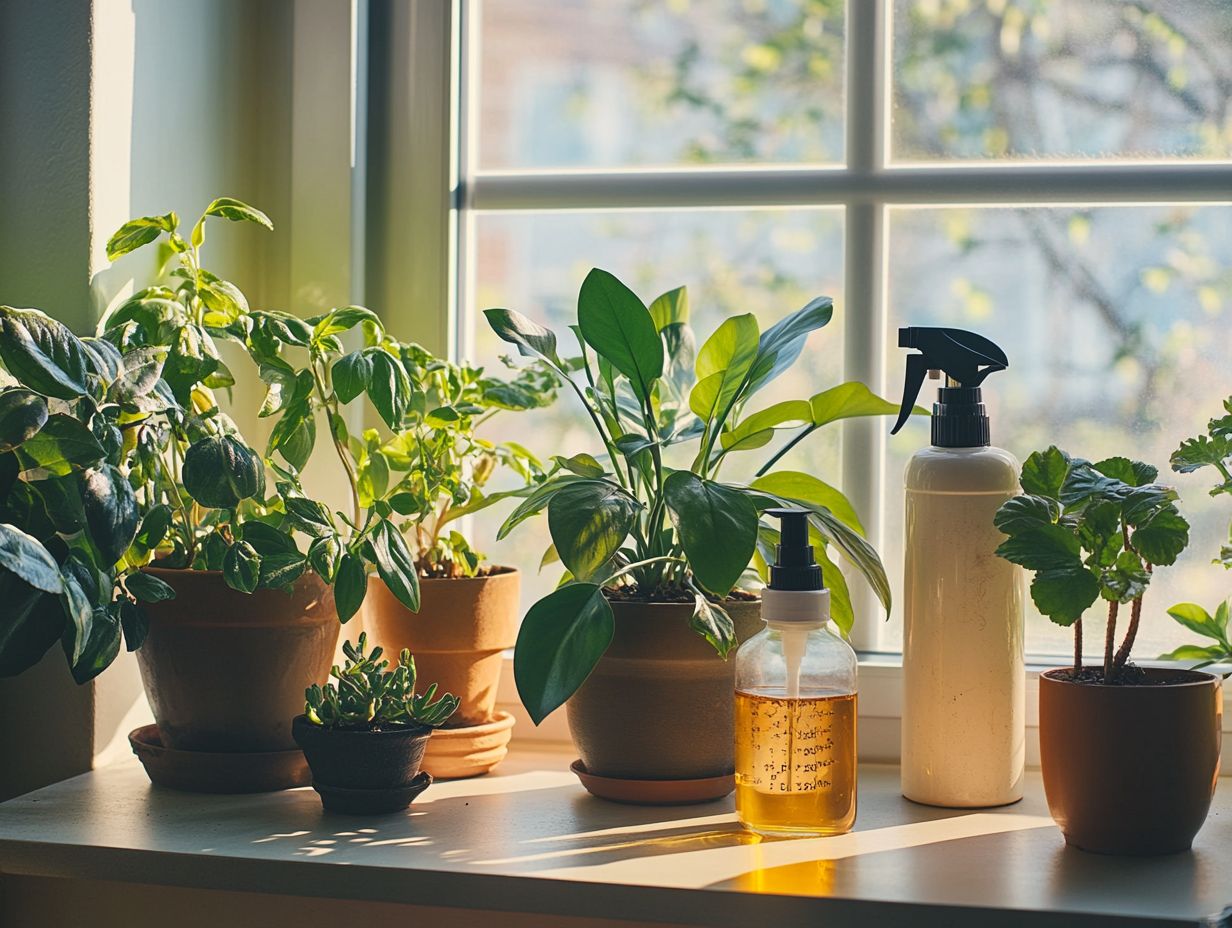
Regular care and maintenance tips are essential for keeping your indoor plants healthy and vibrant. By establishing consistent watering schedules and providing periodic fertilization, you can significantly enhance their well-being. It s crucial to observe your plants regularly for any signs of distress or pest activity, allowing you to intervene promptly when necessary.
Proper lighting conditions and humidity levels are key in nurturing a flourishing indoor garden. Each type of plant has specific light requirements. Understanding whether a species thrives in bright, indirect sunlight or prefers partial shade can dramatically impact its growth.
Maintaining a consistent humidity level is also vital for warding off common pests like spider mites, which flourish in dry air. By incorporating organic pest deterrents and keeping your environment clean, such as removing any dead leaves, you help prevent infestations and bolster the overall resilience of your green companions. Additionally, you can learn how to maintain soil health for indoor plants to ensure they thrive.
Frequently Asked Questions
1. How do I prevent pests from infesting my indoor plants?
To keep your indoor plants pest-free, regularly inspect them for signs of pests. Avoid overwatering your plants, as this creates a damp environment that attracts pests. Keeping your plants clean and dust-free also discourages pests from settling in.
2. What are some natural methods for keeping pests away from indoor plants?
There are several natural methods for deterring pests from your indoor plants:
- Use essential oils like peppermint, neem, or lavender to repel pests.
- Introduce natural predators, such as ladybugs or praying mantises, to consume any pests present.
3. How can I treat a pest infestation on my indoor plants?
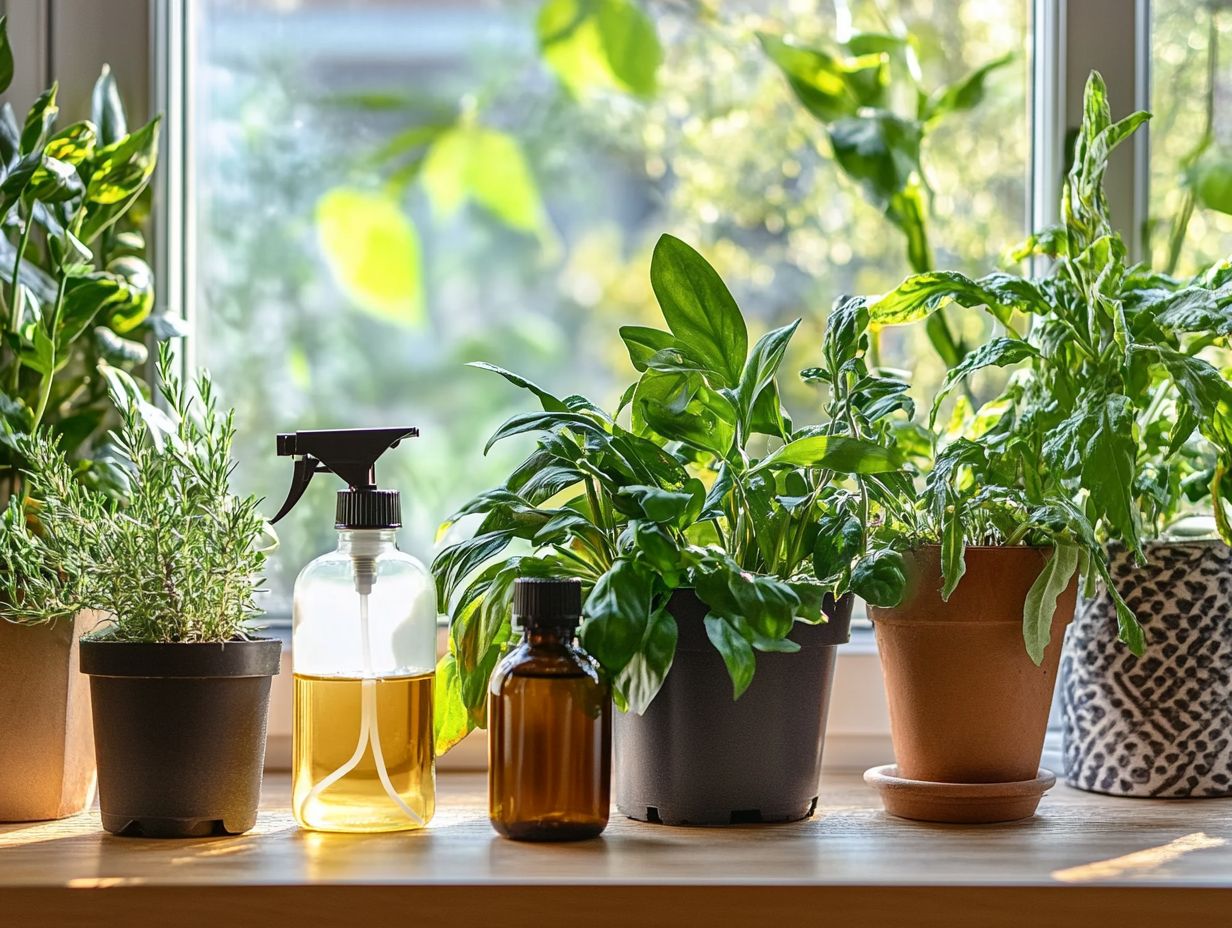
If you notice an infestation, the first step is to isolate the affected plant to prevent pests from spreading. Then, you can use natural or organic pest control methods, such as neem oil or insecticidal soap. If the infestation is severe, using a chemical pesticide may be necessary, but always read and follow the instructions carefully.
4. Are there any household items that can help with keeping indoor plants pest-free?
Yes, several household items can keep pests away from your indoor plants:
- Sprinkle cinnamon powder on the soil to repel pests.
- Use a mixture of water and dish soap to create a natural insecticide.
- Create a vinegar trap by filling a jar with apple cider vinegar and a few drops of dish soap to attract and trap pests.
5. Can pests on indoor plants be harmful to humans?
In most cases, pests on indoor plants pose more of a threat to the plants themselves than to humans. However, some pests, like certain types of spider mites, can cause skin irritation or trigger allergies in some people. Act fast when you spot an infestation to protect your plants!
6. How can I prevent pests from coming back after treating my indoor plants?
To prevent pests from returning:
- Maintain a clean and healthy environment for your plants.
- Regularly clean and dust your plants.
- Ensure proper watering and drainage.
- Periodically inspect your plants for any signs of pests and treat infestations immediately.
Take action now to ensure your indoor plants thrive in a pest-free environment!

